Designer
In the Designer, the components of the system to be calibrated are displayed (called "nodes") and related to each other by connecting lines.


Nodes
Each node represents an instance of the calibration. Be it a server that outputs the signal or a surface that is projected onto. Up to and including the export settings, most of the advances can be found in the new Designer tab.

Each node offers certain parameters that can be viewed and edited in the inspector on the left.

Nodes can be inserted arbitrarily to represent the entire setup that you want to use. Nodes may have black areas with dots representing connection points:

Computer
All participating PC on the network that are to be included in the measurement must be added here. Available PCs are detected automatically. Active devices can be recognised by the blue '6' logo next to the device. Cameras only need to be connected to the master. Only one network switch is required to handle multiple network cameras.
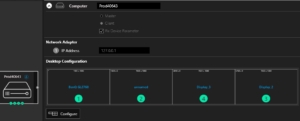
Clicking on 'Configure' will take you to the display setup shown above.
Here you can see which outputs are assigned to physical devices, which can also be identified by clicking 'IDENTIFY'. If you are using a mosaic group or display extenders (e.g. Datapath FX4), you can also 'split' the displays at this point.
The graphics card outputs are displayed at the bottom of the computer icon. Move the mouse pointer over a node to see the connection options. It is also possible to connect the nodes using drag and drop.
Graphics card outputs are connected to monitors or projectors.
Monitor
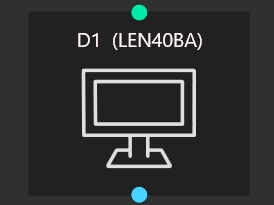
If you use a control monitor, insert it and connect it to your graphics card's right output.
Projector
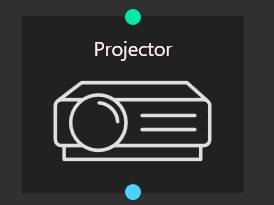
All projectors to be calibrated must be inserted and the properties can be entered, although these do not initially affect the calibration.
Camera
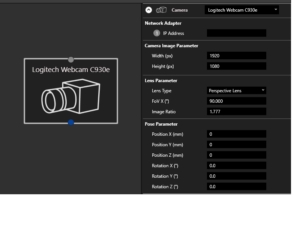
Add the camera to be used for calibration and select the hardware device from the Inspector.
For 3D calibrations it is important to specify the appropriate resolution and lens characteristics. If the position of the camera is known, the values can be entered here to faciliate the camera to surface mapping.
Network Switch
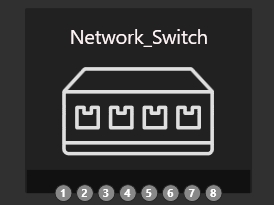
A network switch allows multiple cameras to be connected to a single server.
A switch node should also be created if a computer has multiple network cards, as it allows the active adapter to be selected.
Otherwise, it's not necessary to add a switch note to a design.
Projection surface
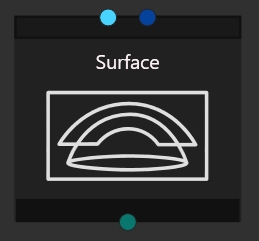
The choice of surface determines the calibration process. You can choose between 2D, where the calibration must be manually adjusted to the screen, and 3D, where a 3D object is added to the calibration.
The 3D object compensates for any distortion of the screen in advance and then requires minimal correction.
The 3D object compensates for the distortion of the screen in advance and then requires only minimal manual warping afterwards, maintaining a good linearity.
For some basic geometrical surfaces a 3D object generator is available:
Flat surface
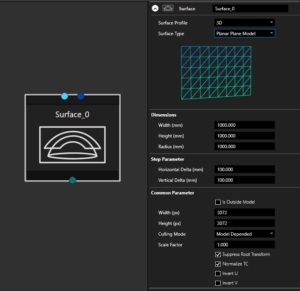
Roundcave / Cylinder / Curvescreen
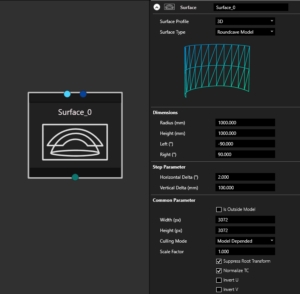
Dome
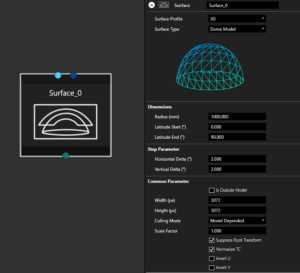
Panadome
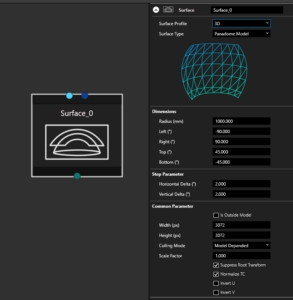
if a specific model is needed, it can be selected via "arbitrary model" and then import as *.obj or *.fbx
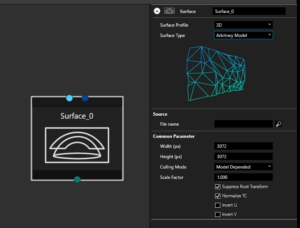
By entering the actual values, an object including a suitable test image is created.
Export

When exporting, depending on the export format, you can set parameters such as file format, file name, location and specific values.
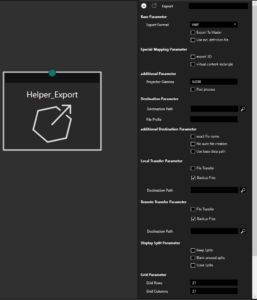
If you have selected a specific profile, these export settings will be pre-configured.
Eyepoint
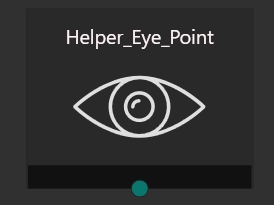
You can export views from a 3D calibration result. Each view represents a frustum calculated for the corresponding projector (Field of view, position and orientation). By default, the reference for this calculation is an eyepoint located in the origin of the 3D model representing the (0,0,0) point. If you would like to offset this position (e.g. for a driver's pose, co-pilot seat, high platform..etc) you can use the eyepoint node to set the offset values and connect it to the export node.
Note: This eyepoint node is only used for simulators with a static eyepoint integration (e.g. Prepar3D, DISI). For dynamic eyepoint plugins (e.g. Unreal, Unity, rFpro) the eyepoint position can be defined at runtime or in the VIOSOWarpBlend.ini of the host application
Connecting Nodes
The nodes must be connected to each other. The connections must correspond to the actual conditions.
Network Connections between: Computer Switch Camera
Video connections between: Computer, Monitor, Projector
View Connections between: Projector, Surface, Camera, Eyepoint
Toolbar
A central toolbar helps with the navigation and view of the designer:
Right-click toolbar
This toolbar can be used to add nodes
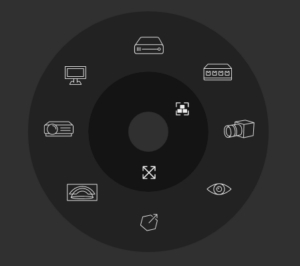
Multiclient Setup
It is possible to create multi-client setups in the Designer. To do this, all servers involved should first be prepared. This means that the same version of VIOSO 6 is installed on all clients and set to run in "Client Mode". The network must be configured and all clients must be available withing the same network.
When everything is ready, you can start adding the first Client in the Designer. If everything is configured correctly, all the clients will now appear with their IP in a drop down menu where the appropriate devices can be selected. The software recognises the graphics card settings and creates the client in the Designer accordingly.
Once all the required Clients have been inserted, the projectors need to be added. All ports are then connected according to their use. The clients to the network and projectors, and the projectors to the surface.
Finish Design
A typical setup may look like this:

Close the Designer by pressing "Finish". The Design is saved automatically when closing the Designer.
If all required nodes are entered all required connections are made, the system is ready for calibration, which is shown by an active "Calibrate button":

If the Calibrate button does not appear, something is missing or ambiguous in the design. In this case, open the Designer once more again and double-check:
All projectors are connected to a PC and to a surface
The camera is connected to a PC and to a surface
If all these conditions are met, the calibration should be enabled after closing the Designer.
Last updated